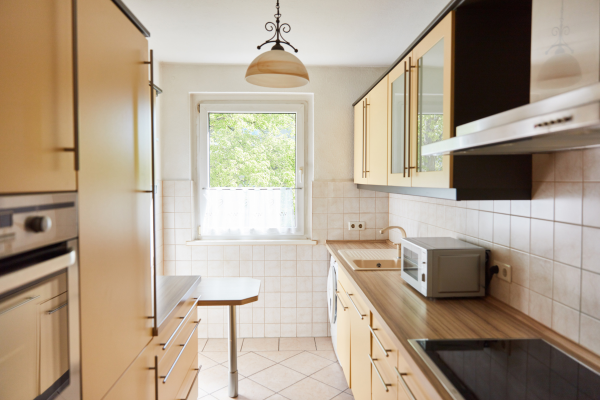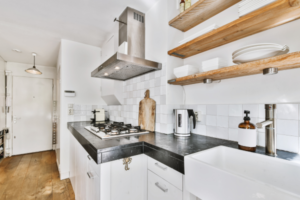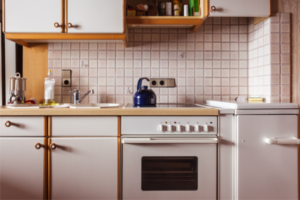Introduction
The kitchen is often referred to as the heart of a home, where delicious meals are prepared, family gatherings occur, and memories are made. However, it can also become a hotbed of clutter, chaos, and disorganization if not managed properly. A well-organized kitchen not only makes cooking more efficient but also creates a pleasant environment for both culinary adventures and daily routines. With some practical tips and strategies, maintaining an organized kitchen can become a manageable and rewarding task.
1. Declutter Regularly
The first step towards an organized kitchen is decluttering. Regularly assess your kitchen items and get rid of things you no longer use or need. Discard expired spices, chipped dishes, and appliances that are no longer functional. Donating usable items can also help reduce clutter while benefiting others.
2. Optimize Storage Space
Maximize your kitchen’s storage potential by using shelves, cabinets, drawers, and organizers effectively. Install hooks for hanging pots and pans, use drawer dividers for utensils, and employ stackable containers to make the most of cupboard space. Consider adding shelves on walls to store items that are used less frequently.
3. Categorize and Group Items
Organize your kitchen items by category. Group similar items together, such as keeping all baking supplies in one area, spices in another, and utensils in designated drawers. This categorization makes it easier to find what you need quickly, reducing the time spent searching through cabinets.
4. Create Zones
Establish different zones within your kitchen based on functionality. Have a food preparation zone near the countertop with cutting boards, knives, and mixing bowls easily accessible. Create a cooking zone around the stove with pots, pans, and cooking utensils within reach. An organized layout streamlines the cooking process and minimizes unnecessary movements.
5. Label Everything
Labels are a simple yet effective tool for maintaining kitchen organization. Use labels on containers, jars, and shelves to identify contents, expiration dates, or categories. Clear labeling ensures that family members can easily locate and return items to their designated spots.
6. Implement a Routine Cleaning Schedule
Develop a routine cleaning schedule to keep your kitchen organized on a daily, weekly, and monthly basis. Daily tasks like washing dishes and wiping countertops after use prevent clutter from accumulating. Weekly deep-cleaning sessions for appliances, cabinets, and pantry shelves maintain order and hygiene. Periodically review and adjust the schedule as needed.
7. Utilize Vertical Space
Make use of vertical space by installing hanging racks or pegboards on walls to hang cooking utensils, cups, or even pots and pans. This not only frees up drawer and cabinet space but also adds a decorative element to your kitchen while keeping frequently used items easily accessible.
8. Maintain a Clear Countertop
A clutter-free countertop not only looks appealing but also makes meal preparation more efficient. Keep only essential items, like frequently used appliances or utensil holders, on the counter. Store other appliances that are not used daily in cabinets to free up space.
9. Regularly Assess and Reorganize
Periodically reassess the organization of your kitchen. As lifestyle and cooking habits evolve, the needs of your kitchen may change. Take the time to reorganize cabinets, drawers, and storage areas to accommodate any modifications or new additions to your culinary arsenal.
10. Involve the Household
Maintaining an organized kitchen is a collective effort. Involve all household members in the organization process and encourage them to follow the established systems. Communicate the importance of maintaining order and where items belong to ensure everyone contributes to a tidy kitchen environment.
11. Efficient Meal Planning
Embracing meal planning is a game-changer for kitchen organization. Plan your meals for the week ahead, create shopping lists based on these plans, and shop accordingly. This approach not only saves time but also prevents unnecessary purchases, reducing clutter and ensuring ingredients are used efficiently.
12. Proper Waste Management
Implement an efficient waste management system within your kitchen. Designate separate bins for recyclables, compost, and general waste. This minimizes clutter, promotes eco-friendliness, and streamlines the process of disposing of kitchen waste responsibly.
13. Mindful Purchasing
Exercise mindfulness when purchasing kitchen items. Invest in versatile tools that serve multiple purposes, reducing the number of single-use gadgets cluttering your space. Prioritize quality over quantity to avoid accumulating unnecessary items that contribute to kitchen disarray.
14. Seasonal Rotation of Items
Consider rotating your kitchen items seasonally. For instance, store seasonal appliances or cookware that are used less frequently, such as ice cream makers or specific holiday-themed items, in a designated area. This rotation ensures that only relevant items are readily accessible, minimizing clutter and maximizing space.
15. Incorporate Aesthetic Storage Solutions
Explore storage solutions that not only organize but also add aesthetic appeal to your kitchen. Utilize glass jars or transparent containers to store grains, cereals, and legumes, creating a visually pleasing display while keeping ingredients fresh and easily identifiable.
16. Regular Maintenance of Appliances
Frequently used kitchen appliances require regular maintenance to function optimally and remain organized. Clean appliances like ovens, refrigerators, and dishwashers according to their respective manuals to prevent clutter caused by malfunctioning or dirty equipment.
17. Utilize Technology for Organization
Leverage technology to streamline kitchen organization. Utilize meal planning apps to create weekly menus, inventory management apps to keep track of pantry items, or smart home devices to manage grocery lists and cooking timers efficiently.
18. Consider Ergonomic Design
Evaluate the ergonomics of your kitchen layout. Ensure commonly used items are easily accessible, minimizing the need for excessive reaching or bending. An ergonomic design not only enhances efficiency but also prevents clutter caused by items being misplaced due to inconvenience.
19. Create a Filing System for Recipes
Develop a filing system for recipes to maintain a clutter-free kitchen counter. Organize printed or handwritten recipes in folders or binders, or digitize them using apps or software, ensuring easy access while cooking without creating a mess of loose papers.
20. Seek Inspiration and Guidance
Stay updated with kitchen organization trends, hacks, and inspiration from various sources. Explore online platforms, magazines, or social media dedicated to home organization, where you can discover innovative ideas and practical solutions to optimize your kitchen space.
Incorporating these additional strategies into your kitchen organization routine can significantly elevate the functionality and aesthetics of your culinary space. From mindful purchasing to embracing technology and ergonomic design, these approaches streamline processes, minimize clutter, and enhance the overall kitchen experience.
Conclusion
An organized kitchen is not only aesthetically pleasing but also enhances functionality and efficiency in meal preparation. By implementing these practical tips, you can transform your kitchen into a well-ordered space that fosters creativity and joy while cooking. Regular decluttering, efficient storage solutions, categorization, and involving household members in the organization process are key elements to ensure your kitchen remains a harmonious and functional hub within your home. Embrace these strategies to enjoy the benefits of an organized kitchen and make cooking a more enjoyable experience for everyone.



